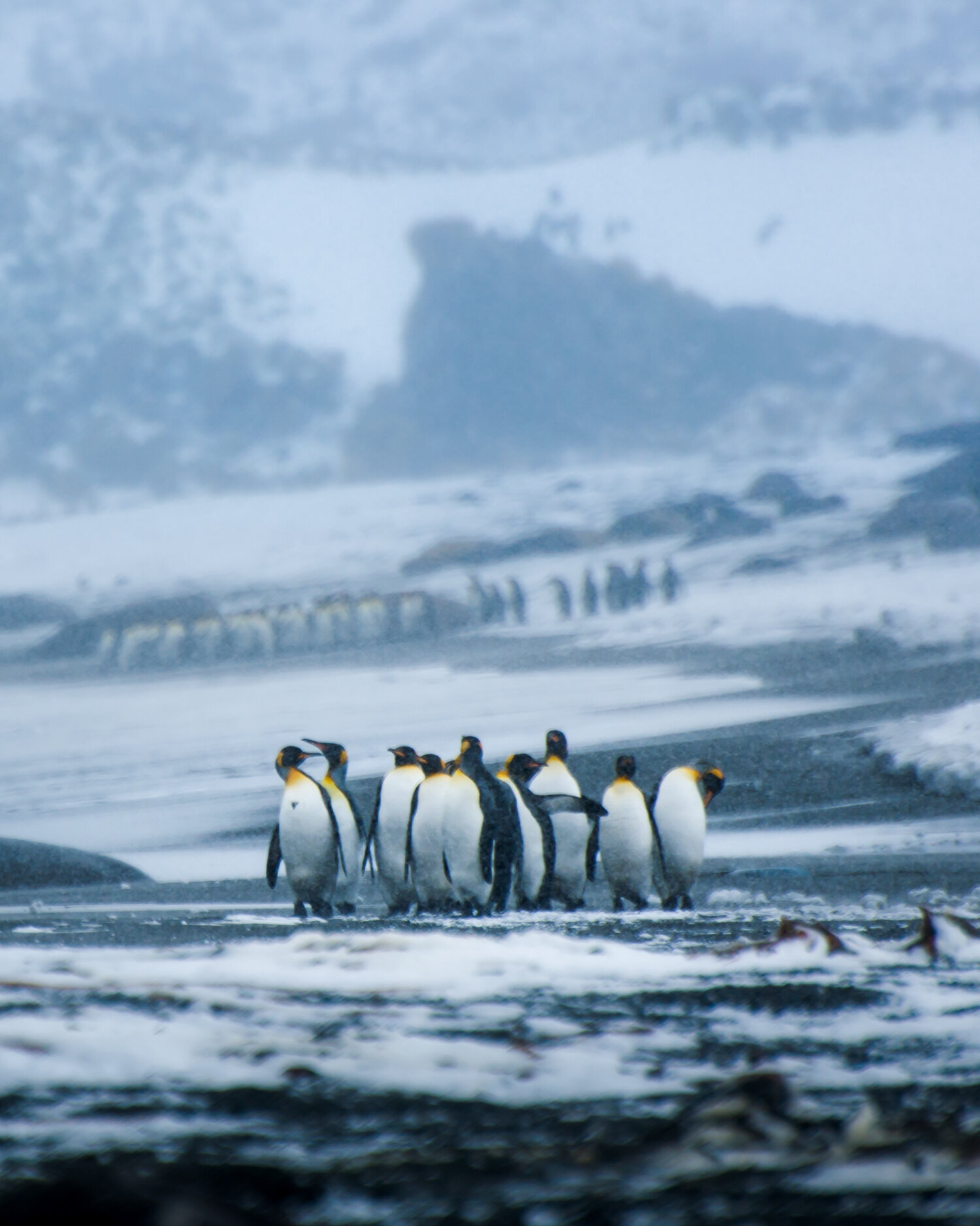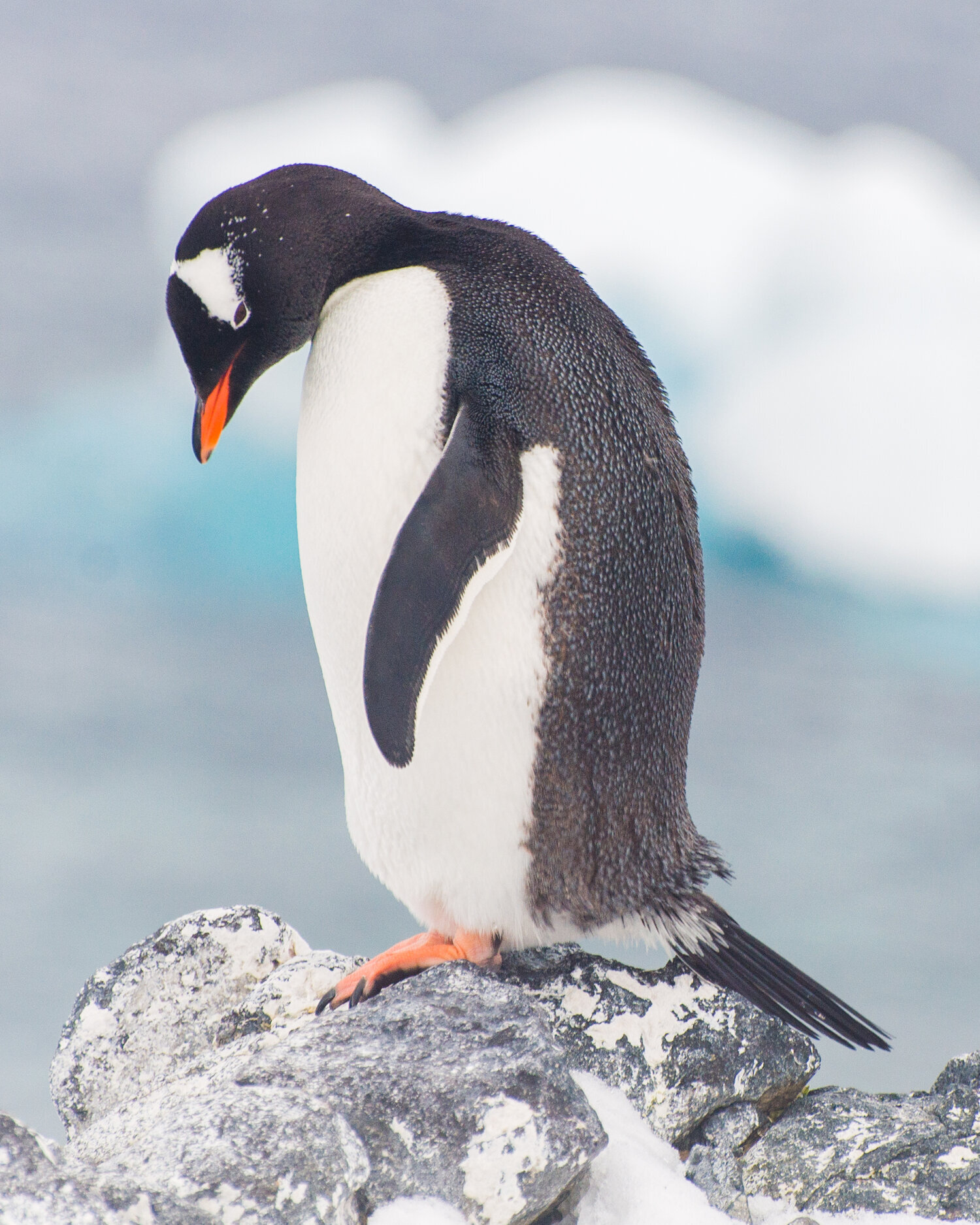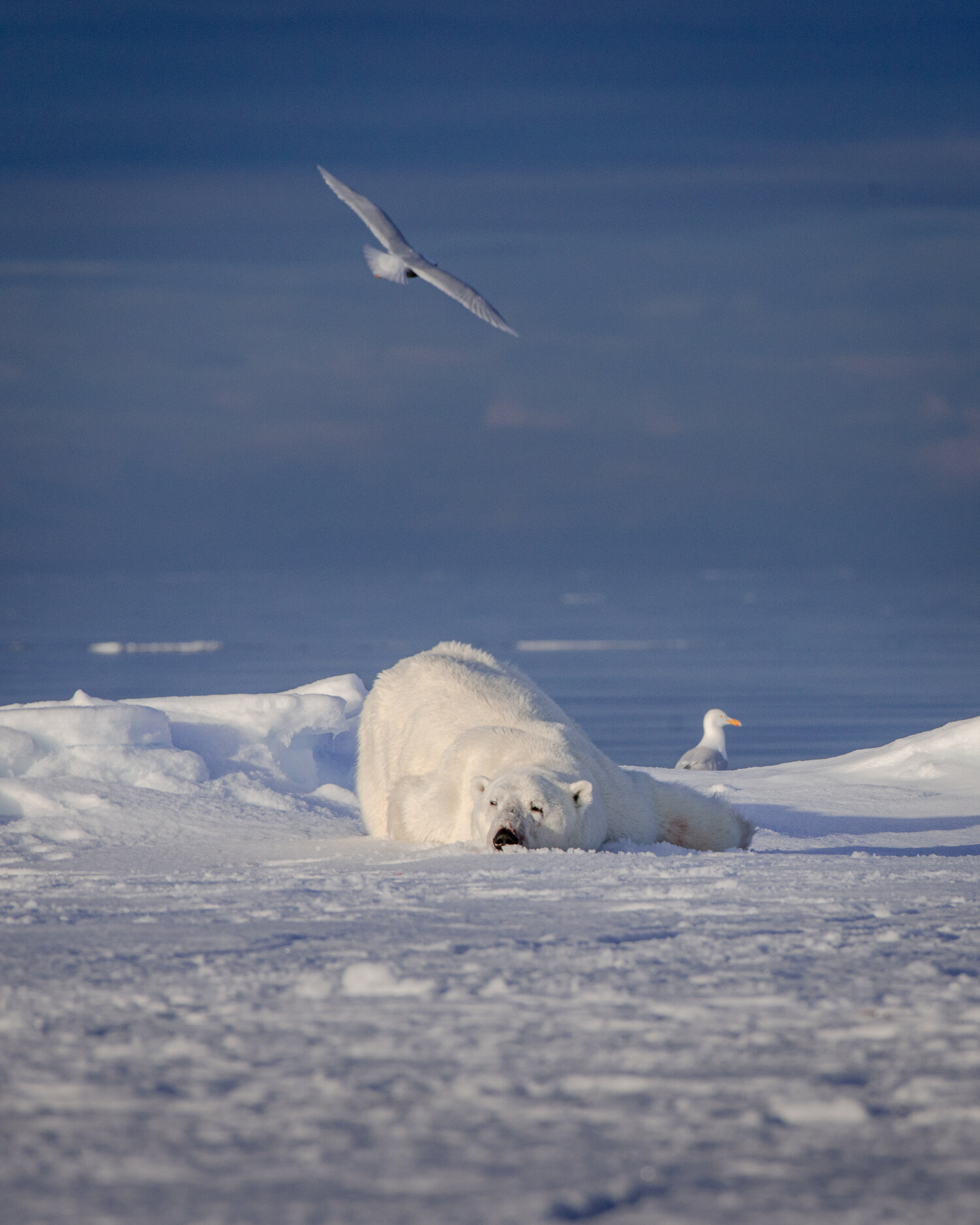Polar Regions Through the Lens with Jenny Wong
Polar Regions Through the Lens is a photo series by Canadian photographer and environmental scientist Jenny Wong. The following images were all taken by Jenny in her pursuit to document wildlife and the environment throughout our planet’s most sparsely populated regions.
Pond Inlet, Nunavut, Canada. A lone polar bear patrols for seals alone the floe edge. Jenny Wong.
Pond Inlet, Nunavut, Canada. A polar bear is in the process of devouring his seal catch. Seals account for 90 percent of a polar bear’s diet. Jenny Wong.
I got the chance to chat with wildlife photographer and scientist Jenny Wong about her work documenting wildlife in the polar regions, deep forests and beyond.
How did you get started with documenting wildlife?
Photography was meaningless, a tool that made my travel bag heavier, until I find a voice behind the art. A story that means more than just a pretty image. This is the reason to haul around more weight.
Growing up in the age of hardcopy NatGeo magazines and encyclopedias, wildlife was definitely a draw. I've always wanted to see them all for myself.
Pond Inlet, Nunavut, Canada. A polar bear goes for a swim along the floe edge in the Canadian Arctic. This image, captured with a drone, shows just how adept polar bears are in the water. Jenny Wong.
What are the two greatest lessons you’ve learnt while doing this work?
Lesson one: Be diligent in planning but be flexible to adjust. Shot list is important, but likewise you can't guarantee wildlife to appear, to pose, or conditions to be ideal. You need to accept that, have an open mind to create beyond those plans.
Lesson two: Even if you get perfection, everything you planned. Set aside thirty percent of your effort and time on being creative right there. The safe shots are done, now let the magic happen. Things you cannot anticipate at home planning can inspire a whole new shot list.
South Georgia Island. King penguins weather through a storm in the Subantarctic.
Antarctica. A Gentoo penguin stands alone in the Antarctic Peninsula. Jenny Wong.
What are the top three things to keep in mind when documenting wildlife?
One, the environmental shot zoomed out is just as important.
Two, be ethical, do not bait, be that fly on the wall. The key is capturing their natural beauty not one that's instigated by human presence.
Three, be patient. Wildlife photography is not possible without some crazy patience and determination.
Can you describe the most magical moment you’ve experienced while documenting our planet?
My most magical moment has to be tracking mountain gorillas in Rwanda. To be surrounded by the Susa family, 42 gorillas, and see their very human interactions and expressions. It made me reflect on what makes us different from these close relatives. And perhaps the traits that lead us to being less humane.
Gitga’at Nation, British Columbia, Canada. A Canadian Kermode bear, locally known as a “spirit bear” looks for salmon on a river deep in Gitga’at First Nation in coastal British Columbia’s Great Bear Rainforest. Kermode bears are a rare subspecies of the American Black Bear, with a recessive gene that makes their fur white. Kermode bears hold a prominent place in the oral traditions of the indigenous peoples of the area. They largely inhabit three islands on BC’s northwest coast. Jenny Wong.
What camera settings do you use when photographing animals?
Camera settings really change with environment. With wildlife they are always moving, some like birds very quickly so regardless of light, your shutter has got to be quick. If you want a workable image you often need to sacrifice some ISO.
Small animals you can shoot pretty close to wide open to get that shutter speed up. But with large animals, you have to be weary of your depth of field. Shooting wide open on a bear will give you a sharp nose and that's about it.
Faroe Islands. Sunlight peeks through the clouds to illuminate a waterfall on the Faroe Islands. Jenny Wong.
Lofoten Islands, Norway. A small village can be seen from the air along the northern Norwegian coast. Jenny Wong.
What camera settings do you use when photographing landscapes?
Landscape— plan for even light! Landscape shots with proper planning rarely need to sacrifice ISO, except in astro. Longer exposure times can be stabilized with a tripod, the scenery doesn't move. But scenes with water or drifting clouds you can convey movement with longer exposure times. ND filters can help adjust for these things. Circular polarizers are a helpful as well. They help with colour and taking out glare.
Generally with landscape we shoot at the sweet point of the lens, or little beyond that to balance lens sharpness and depth of field.
Pond Inlet, Nunavut, Canada. A polar bear patrols the floe edge looking. for prey. Jenny Wong.
Pond Inlet, Nunavut, Canada. A polar bear takes a roll in the snow. Jenny Wong.
For you, what is special about documenting the Arctic in particular?
The arctic is the frontline and our last line in the climate change battle. Without a doubt we are the first generation to understand this, and the last generation to do anything about it— a place so inhospitable and remote few will see or relate to.
Bringing these images into the mainstream, showing an audience its beauty and plight, in hopes of inspiring change in choices and behaviour. If science is the brains of this battle, then photography may just be its heart.
Pond Inlet, Nunavut, Canada. A lone polar bear walks the sea ice towards a couple of Inuit camps. During the floe edge season, mostly in April, polar bears can be found patrolling this area in search of food before the rest of the ice melts and their food source becomes scarce. Jenny Wong.
Can you offer any pointers for using drones to document wildlife?
Wildlife is sensitive to drones, so avoid bird nesting areas like bird cliffs. Do not chase animals.
The bear I droned was tracked for several days, he was brazen approaching an Inuit camp, they tried scaring him away with snowmobiles. He was not fazed till they shot a rifle into the ice. I popped the drone up first from a distance as he walked away and snapped a picture, no approach.
For the water shot, I popped it up while he was swimming and just held position a distance away from him hoping for him to approach, which he did to take a look and then went on his way.
Droning animals should be done from a far or patiently wait for a cooperative creature and let them dictate if they want to be close to your drone or not.
Jenny Wong
Jenny Wong is a scientist and adventurer, but naturally all adventurers become story tellers, and frankly a story is just a bit better with some images. Her story was always in the wild with the wild things, their story became her mission. A photographer, a story teller, a content creator, whatever the hat, the purpose is conservation. She is based in Calgary, Canada. Follow her @jdubcaptures.












